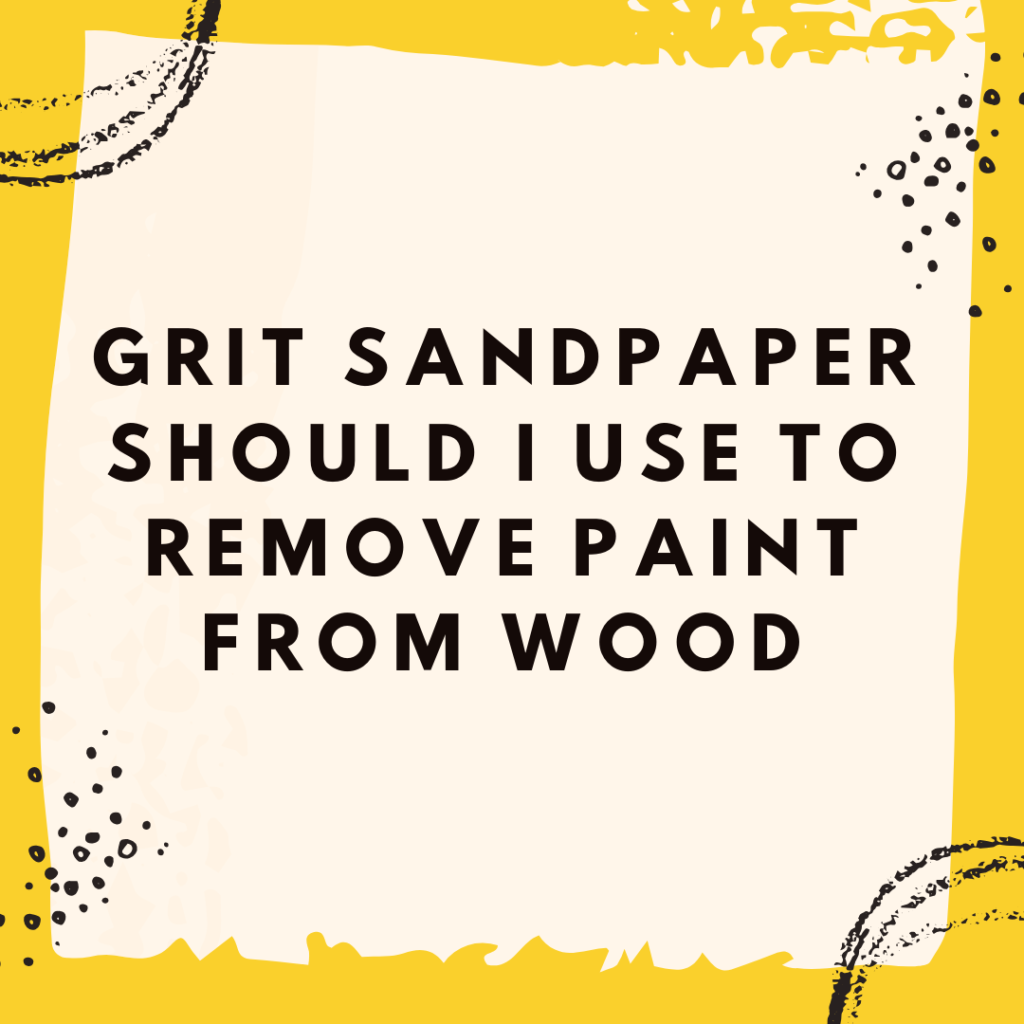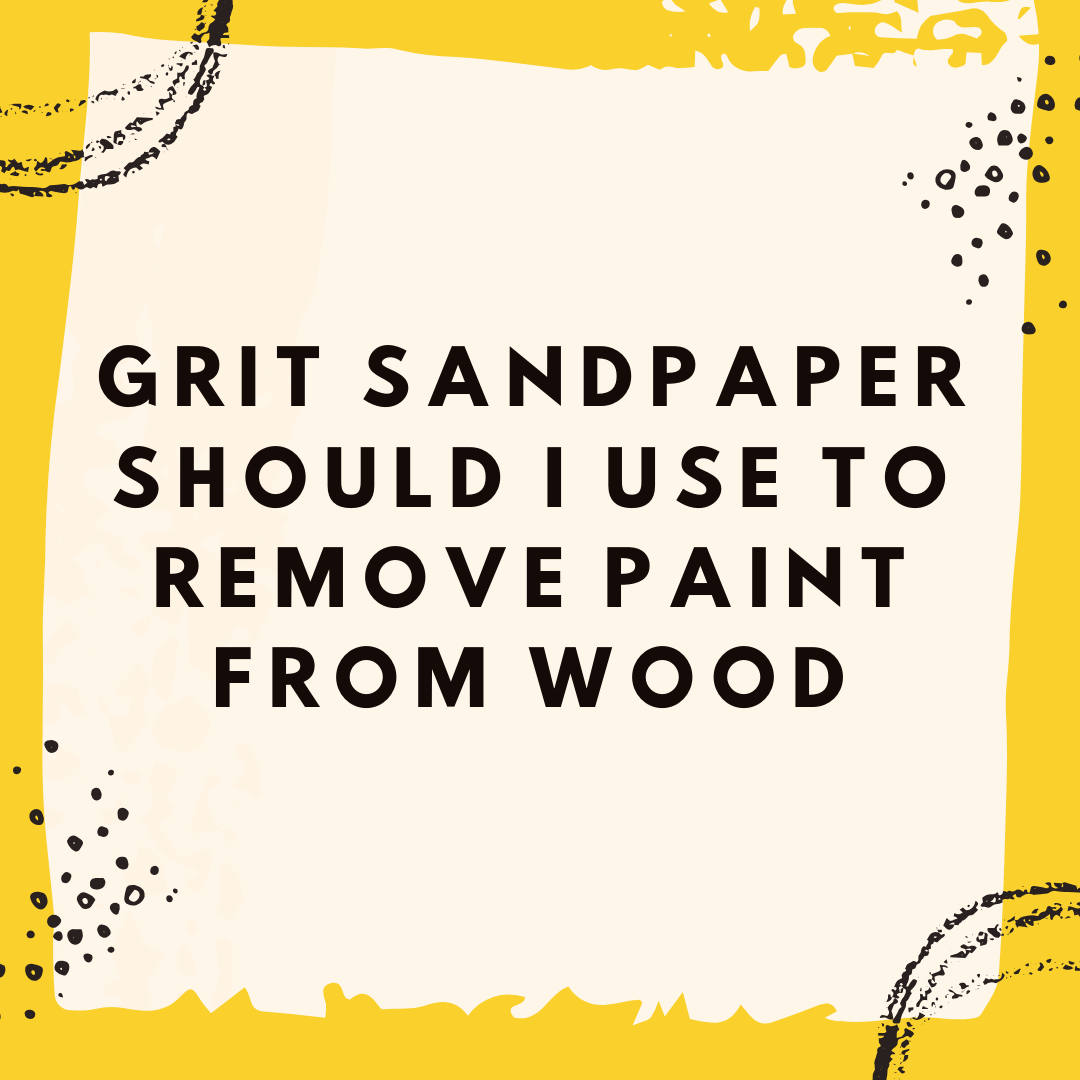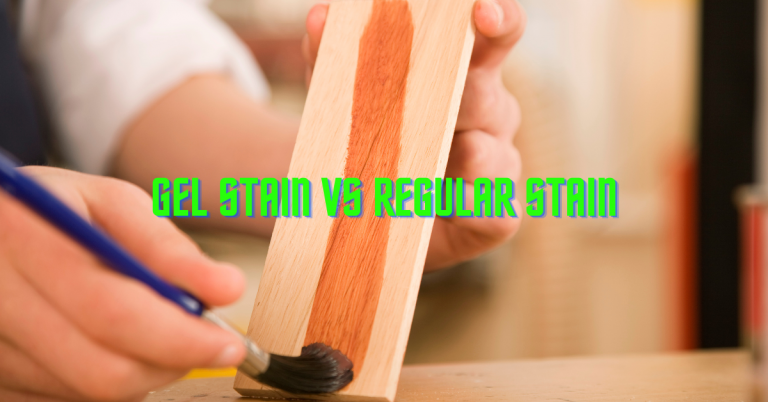What Grit Sandpaper Should I Use to Remove Paint from Wood?
Woods get stained with paint, it’s an occurrence that can not be avoided even if enough precaution is taken. When woods get stained with paint, it is easy to get this paint off the wood and this can be made possible by using a grit sandpaper. Grit sandpaper comes in different forms and this article will reveal the grit sandpaper that should be considered when removing paint from wood.

All at a Glance
What Grit Sandpaper Should I Use to Remove Paint from Wood?
Coarse 80-grit sandpaper, medium 150-grit sandpaper, and fine 220-grit sandpaper are the grit sandpaper you should use in removing paint from wood.
Grit sandpaper comes in different forms and all perform different roles based on the scenario. 80-grit sandpaper is used to remove leftover marks from wood after removing paints, and medium 150-grit sandpaper on the other hand is used to wipe dust from wood to get a smooth surface.
Lastly, the 220-grit sandpaper wipes away all dirt, dust, and paint that might have been left over by 150-grit sandpaper. These three grit sandpaper should be considered when removing paint from wood, it’s the best way to get a clean surface after applying paint to a wood intentionally or unintentionally.
How to Remove Paint from Wood Using Grit Sandpaper
To remove paint from a wood using grit sandpaper, you should have in place three grit sandpaper which are Coarse 80-grit sandpaper, medium 150-grit sandpaper, and fine 220-grit sandpaper. Each sandpaper will be critical in ensuring you get a clean surface.
Having secured the grit sandpaper needed, follow the steps below to remove the paint:
Step 1: Clean the Surface
Very importantly, before you start sanding, ensure you clean the wood with a cleaner or dish soap. Once cleaned, wait for some minutes to ensure the wood gets dry, don’t start sanding until you get a dry wood.
Step 2: Use Coarse 80-grit Sandpaper to Sand the Entire Surface
80-grit sandpaper should be your first choice when removing paint from wood. Sand the entire surface with this sandpaper and ensure you apply the needed pressure so as not to destroy the wood.
Step 3: Use Medium 150-grit Sandpaper
The medium 150-grit sandpaper should be used for your second round of sanding. Before you start using this sandpaper, ensure you wipe away all the dust and debris generated from the initial cleaning.
150-grit sandpaper will ensure you get smoothing wood surfaces that the 80-grit sandpaper could not provide. Avoid over-sanding and apply less pressure so as not to destroy the wood.
Step 4: Use 220-grit Sandpaper
This is the final stage of cleaning, oftentimes, you will be left with small particles to clean and wipe off the dust from your surface before you begin cleaning. This last sanding will give you perfect wood without any paint.
Apply less pressure as you are dealing with a minimal stain.
Step 5: Clean the surface
Finally, after using the 220-grit sandpaper to sand your wood, you should wipe off the dust and clean the surface with a water-soaked rag. If you are unable to get a water-soaked rag, you can get a form soaked with water.
After cleaning thoroughly, you will get the maximum result needed.
What are the types of Grit Sandpaper available for wood?
There are six main grit sandpapers and they all perform different roles. They are categorized into coarse, medium, fine, and extra fine. Each grit has a number rating and this helps understand how it works.
One thing you should understand is that the higher the grit number of sandpaper, the finer the abrasive particles and the smoother the finish that can be achieved. However, the lower the grit number, the coarser the finish but the quicker the material removal rate.
Here are the types of Grit sandpaper and its uses:
Grit 24-36
Suitable for removing stubborn paint or varnish from surfaces and old floors. It is perfect for stripping paint, shaping wood, and cleaning off rough edges in metalwork.
Grit 60-80
Not aggressive as Grit 24-36, this should be considered when removing large amounts of wood and rounding off corners. You should also consider using it when removing old finishes.
However, the final result might see you get some noticeable scratch marks.
Grit 100- 150
Your best choice for general-purpose sanding. This grit prepares your wood surface for its finishing. It is suitable for removing minor scratches, tool marks, or light finishes.
Grit 100-150 provides a smoother finish than its predecessor.
Grit 180 – 220
This is best used to roughen surfaces for painting or as a passthrough for sanding with extra-fine grits later on. It is ideal for creating a smooth surface on wood, also used to remove small scratches left by coarser grits.
However, light pressure should be applied when using Grit 180 – 220 for sanding.
Grit 320
Often tagged ultra-fine, this helps when you want to achieve a nearly glass-smooth texture. It is used to get the maximum smoothness needed in a wood. You can use this to lighten up rough edges, and also remove minor scratches from metal. It should be used with care, excessive use could lead to over polish.
What Grit Sandpaper is Best Used for Wood?
When it comes to sanding wood, all grit sandpaper is suitable depending on the type of wood and stain you want to remove. However, you must have a clear understanding of your project and the finishing you are looking at before choosing your grit sandpaper.
Factors you should consider before choosing a Grit sandpaper for wood
You should consider the factors below before choosing the Grit sandpaper you will be using for your wood:
Type of surface you are sanding
The type of surface you are sanding should be your first factor. Woods come in different surfaces and it’s of utmost importance you have a good understanding of the type of surface the wood you are cleaning carries.
Types of wood surfaces include:
- Rough Sawn Wood
- Softwoods
- Hardwoods
- Veneer Surfaces
- Raw Wood
- End Grain Surfaces
The above surfaces will determine the type of grit sandpaper you will use for cleaning. If you have issues identifying the wood surface, seek the help of an expert.
Amount of Stain you need to remove
All grit sandpaper removes stains differently. The amount of stain you want to remove will decide what type of grit sandpaper you should choose.
The finishing you desire
Lastly, your final result after sanding should be considered before sanding. Are you seeking a well-clean surface or do you want your face not too clean but slightly clean, all these questions should be answered before choosing that sandpaper.
Takeaway
Removing paint from wood is easier when using grit sandpaper. Grit sandpaper comes in different forms and it’s essential you understand the type of surface, wood, and your preferred result before opting for a specific grit sandpaper.
Coarse 80-grit sandpaper, medium 150-grit sandpaper, and fine 220-grit sandpaper are the grit sandpaper you should opt for when removing paint from a wood, the steps explained in this article will ensure you get the best result.







